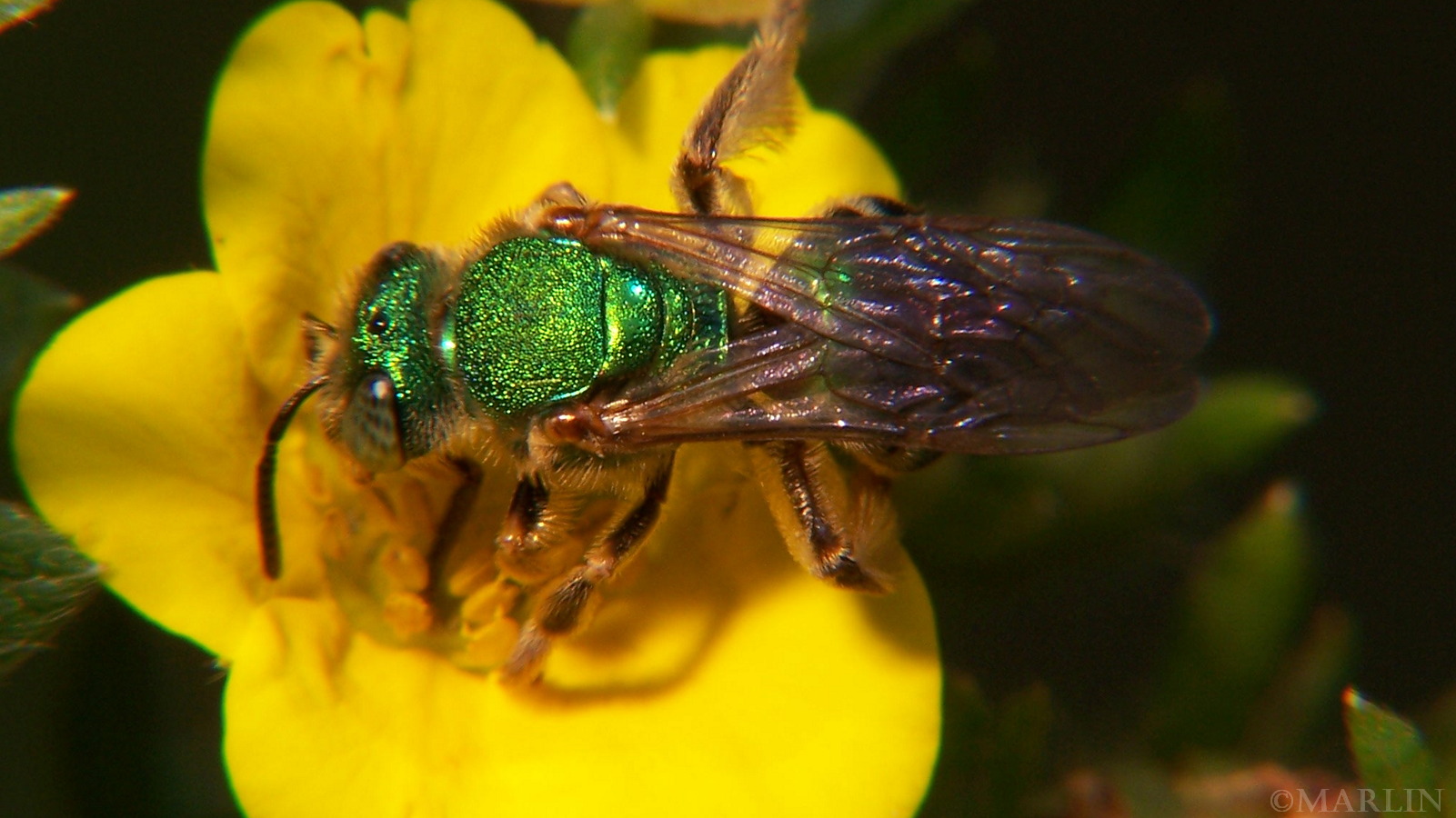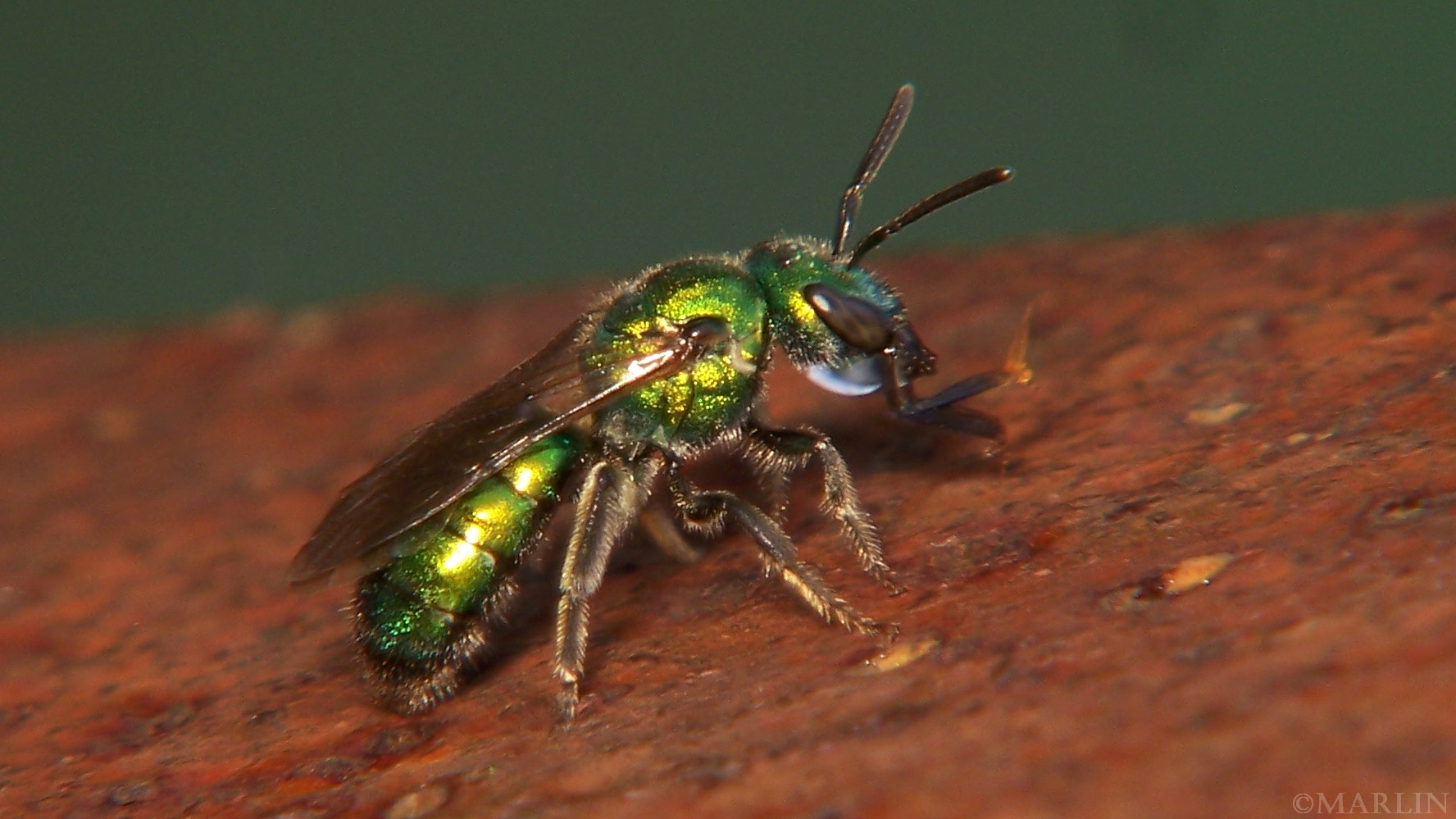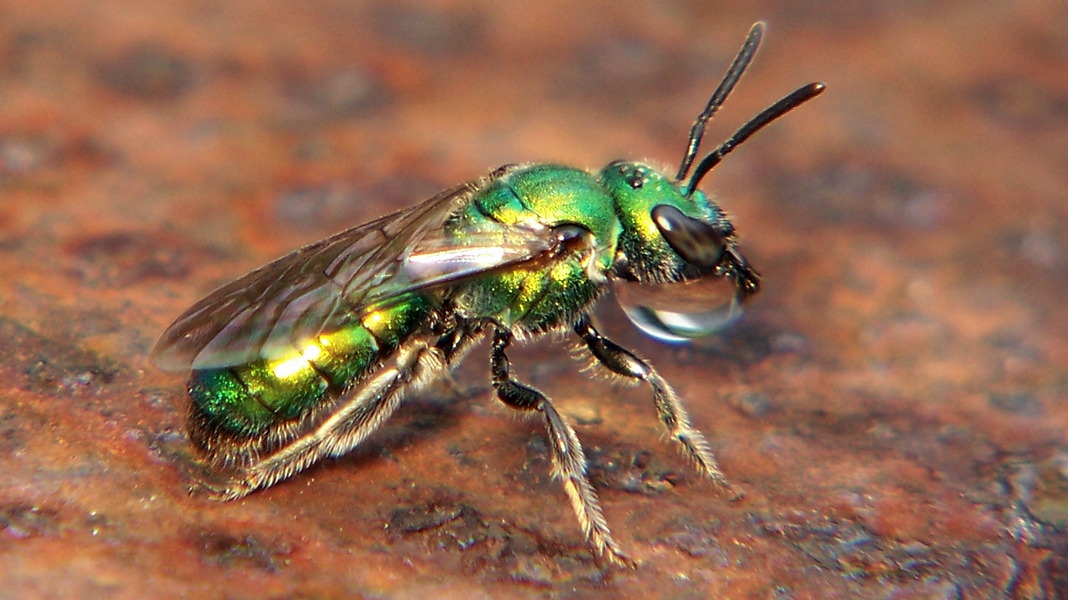Halictid Bee – Agapostemon virescens
Family Halictidae — Halictid Bees
Live adult bees photographed in the wild at various North American locations. Size: 6-8mm
Halictidae are important pollinators of flowering plants, especially in light of the worldwide honeybee decline
The bee pictured above and below is busy consolidating and lightening her load by continuously regurgitating (and re-swallowing) nectar from her gut into an open-air bubble and letting the water evaporate, thereby concentrating the sugars into a smaller and lighter payload. I’ve seen them spend 10 minutes or more doing it.
Most bees are solitary — each female constructing a nesting tunnel underground or in plant materials. She stocks the brood cells with pollen and nectar for the larvae to eat after hatching. Honey bees and bumblebees, however, are social insects — They live in colonies consisting of a fertile queen, sterile female worker bees, and male bees (drones). These are the only bees known to produce honey, and they are the only bees which will sting readily in defense of their colonies.
I love chasing these gals around. What more pleasant way to spend a summer afternoon that chasing gorgeous creatures around a flower garden or prairie?
Order Hymenoptera: Bees, Wasps, & Ants belong to this large order, which also includes sawflies. Most species are solitary, but some, such as the domestic honeybee, exhibit a complex social structure in which exist sterile female workers and fertile male and female royalty.
Insects & Spiders | Bees & Wasps Index | Bees & Wasps Main | Beetles Index


